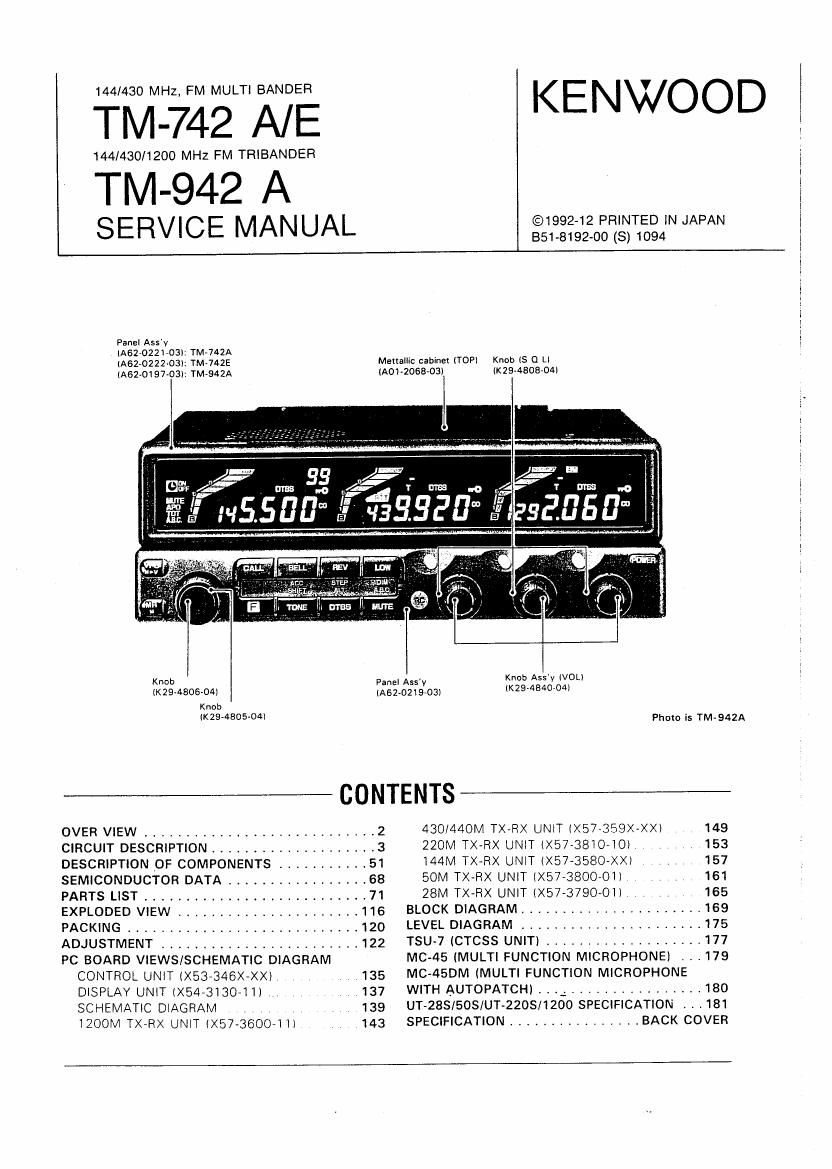Kenwood TM 742 E Service Manual
This is the 167 pages manual for Kenwood TM 742 E Service Manual.
Read or download the pdf for free. If you want to contribute, please upload pdfs to audioservicemanuals.wetransfer.com.
Page: 1 / 167
